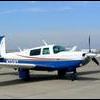How does a Mooney fly if the prop comes off?
-
Members Online
- Tafara Gadze
- eman1200
- Scottknoll
- ohdub
- Justin Schmidt
- 47U
- jordanjms
- M20S Driver
- Pinecone
- buddy
- DCarlton
- jetdriven
- redbaron1982
- nickowen5
- Falcon Man
- PT20J
- Fly Boomer
- Parker_Woodruff
- NickG
- Joe Linnebur
- JohnnieMKE
- Oscar Avalle
- Jim F
- Thedude
- Jason 1996 MSE
- Mooney in Oz
- Skyland
- robert7467
- milotron
- Guillaume
- 201er
- Patrick Horan


Recommended Posts
Join the conversation
You can post now and register later. If you have an account, sign in now to post with your account.